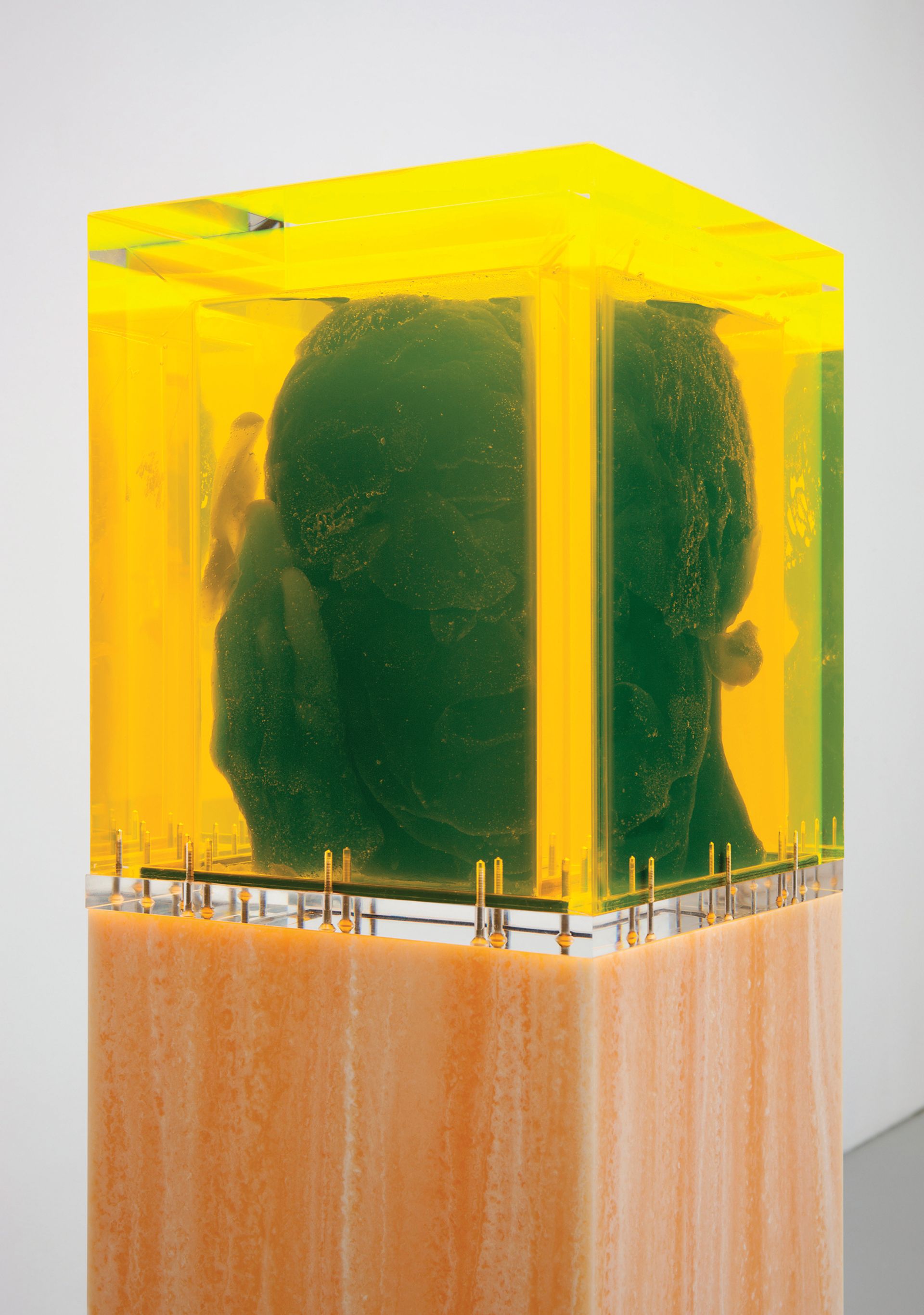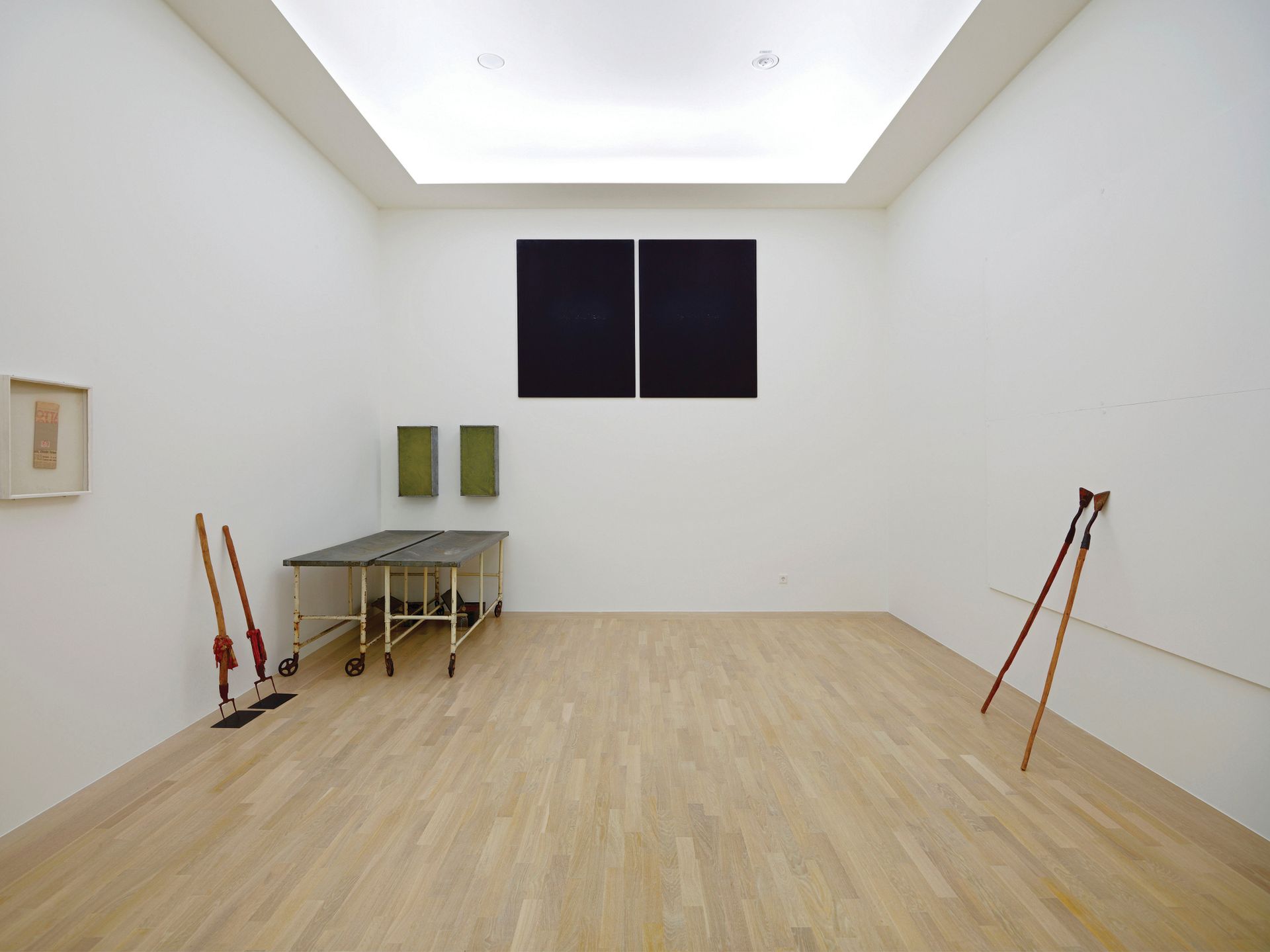Show Your Wound, the curated display that accompanies Tefaf’s Modern section this year, has rich inspiration. This focused exhibition of seven artists attempts to introduce the fair’s visitors to new developments in art. It is infused with not only the spirit of Maastricht’s Medieval religious roots—the city has one street called Het Vagevuur, or Purgatory, and the 13th-century Helpoort, or Hell’s Gate—but also the spectre of a totemic figure in European post-war art, Joseph Beuys (1921-86).
The German artist’s Show Your Wound (1974-75), a typically enigmatic multipart installation that was made for a subway in Munich, gives the display both its title and its broad thematic territory: of transformation, the life cycle, entropy and death. According to the show’s curator, Mark Kremer, the connection with Beuys is “an observation and a hypothesis. I think Beuys has a new relevance when I look at the global art landscape.” He suggests that as well as being inspired by Beuys’s physical work, artists have been influenced by him less directly. “It works in a different way,” he says. “Beuys has touched them in some way; he lives in them.”
The seven artists in the exhibition “have responded in ways that I did not foresee”, Kremer says, “so some unexpected and inspiring things are happening as we speak”. They range from mid-career artists like Holland’s Folkert de Jong, who is creating a characteristically macabre sculptural tableau based on a shot of a motor-racing accident at the Dutch Grand Prix in 1973, to the 80-year-old US sculptor William Tucker, who is showing recent bronzes drawing on mythical figures such as Uranus. “It’s funny because some of these works are almost monumental—Uranus is very large—but they strike me as works that in fact talk about something that is very intimate, and that has to do with feelings that can haunt you, strong emotions,” Kremer says.

Peter Buggenhout is another of the four artists making new works for the show. “He works with debris, with things that are cast aside,” Kremer says, and creates a sense of “catastrophe—with the last things that walk our earth”. He likens the atmosphere of Buggenhout’s work to John Hillcoat’s 2009 film The Road, based on the US novelist Cormac McCarthy’s bleak post-apocalyptic novel. “Buggenhout uses intestines and animal hides in one particular type of sculpture and you feel this element of a form of life that is there, that has been transformed, almost like an alchemist would do it. With this work, there is a very strong connection to Beuys.”
Much has been made of Beuys’s preoccupation with death in Show Your Wound, and although Kremer admits that “death and decay are important elements” in that installation, he argues that it is a powerful reference point because of its concern with “energy in rest and an erratic, emblematic reference to the cycle of life, not only as an element of nature, but also as part of our social fabric”. The relevance of Show Your Wound today “is that it points to the archaic, to myths, to old wisdom, if you like, and also to questions like: what do we need to address the contemporary, or to change it, or to cope with the political reality of the moment?”
If Kremer’s intention is to evoke Beuys’s moral approach, his commitment to wider social and political realities, does his show offer pause for thought amid the commerce of an art fair? Kremer says that some of the artists foreground “the field of ethics” rather than “questions that, a priori, you’d associate with aesthetics and money”. He adds: “There are some works that reflect the aesthetics of Beuys, and that is not so easy to take in for a larger audience—they have to pay attention and give it time.”

Beuys and the Show that inspired the show Human vulnerability plays a central role in Joseph Beuys’s installation Show Your Wound (1974-75), which was built in a pedestrian subway in Munich and is now in the city’s Lenbachhaus gallery. Beuys explained the work as follows: “If we show our wounds to others, we can be healed.” We should show our wounds and reveal the diseases we want to be cured of, he continued, emphasising a recurring theme in his art.
The act of showing, which the artist performs visually, corresponds to the assertion that the cognitive level of psychoanalysis presents the possibility of healing. Beuys goes one step further, asserting that cognition is a prerequisite of the physiological healing process. Show Your Wound is about more than a single wound, an injury suffered by a living person. It is also about death, symbolised here by two worn-out hospital trolleys on which bodies are wheeled to the mortuary. Certainly, several elements in the installation suggest that there is the possibility of a cure. For example, the zinc-plated steel containers store fat, a primary source of energy. The blackboards might be used to write notes on the cognition process. The two barking irons (tools for debarking trees) are a somewhat exotic addition. The removal of tree bark can be interpreted as a process of transformation from death to rebirth.
Writing in 1988, Armin Zweite—who, as the museum's director, acquired the work for the Lenbachhaus—spoke about how it “violated taboos” by pointing the viewer straight towards death “in such a way that displacement is impossible”. The trolleys are an “unequivocal demonstration that death is the inescapable outcome of life”.
This interpretation has a direct connection with the artist’s own life, since Show Your Wound is a reference to the heart attack Beuys suffered in 1975. Never again did he depict so unflinchingly his awareness of death and his own sense of danger than in the Munich installation. Instead, in later installations, such as Terremoto in Palazzo (1981), created for the city of Naples to commemorate its earthquake in 1980, he focused on the threat to humanity as a whole. — Bernhard Schulz

